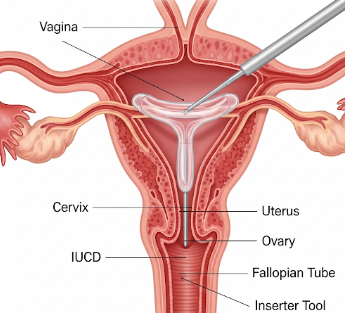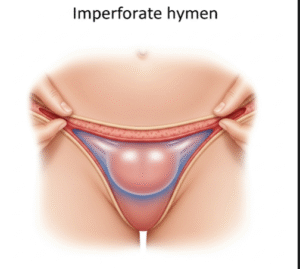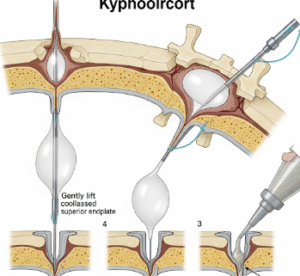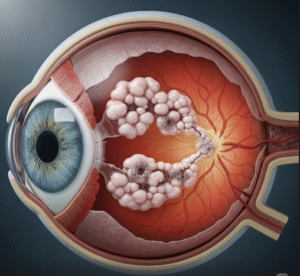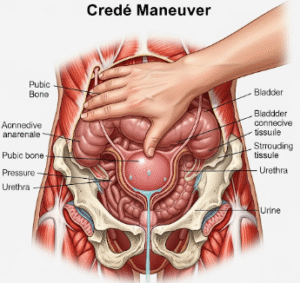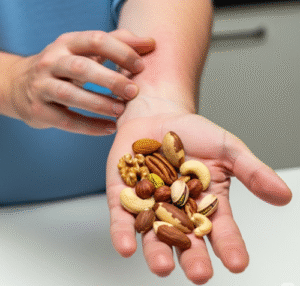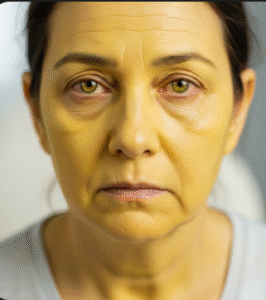Overview
IUCD insertion is a minor gynecological procedure used for long-term contraception. An Intrauterine Contraceptive Device (IUCD) is a small, T-shaped device inserted into the uterus to prevent pregnancy for several years. IUCDs are highly effective, reversible, and suitable for women who desire long-term, low-maintenance contraception.
South Korea is recognized for expert gynecologists, sterile facilities, and advanced IUCD insertion techniques, making it a preferred destination for patients seeking safe, reliable, and minimally invasive contraceptive solutions.
What is an IUCD?
An IUCD is a small device placed inside the uterus that:
- Prevents fertilization by affecting sperm movement and egg implantation
- Can be hormonal (releasing progestin) or non-hormonal (copper IUCD)
- Provides effective contraception for 3–10 years, depending on type
- Easily removable, allowing fertility to return quickly after removal
Indications for IUCD insertion include:
- Women seeking long-term, reversible contraception
- Those who cannot take hormonal pills or prefer a non-daily option
- Women looking for highly effective birth control with minimal maintenance
- Patients who want flexible fertility planning
What are the Benefits?
- Highly effective contraception → Over 99% effective in preventing pregnancy
- Long-lasting → Several years of protection with a single procedure
- Low maintenance → No daily pills or frequent action required
- Reversible → Fertility returns quickly after removal
- Safe and minimally invasive → Performed as an outpatient procedure
- Expert care in Korea → Hygienic, sterile, and carefully monitored insertion
Procedure Details
1) How should I prepare for IUCD insertion?
- Pre-insertion evaluation → Pelvic exam, medical history, and screening for infections
- Medication guidance → Pain relief or antibiotics may be discussed
- Timing → Often done during menstruation for easier insertion
- Pre-procedure consultation → Discuss type of IUCD, benefits, risks, and post-insertion care
- Lifestyle preparation → Empty bladder, relax, and follow gynecologist’s instructions
2) What happens during the procedure?
- Patient positioning → Lying on a gynecological examination table
- Preparation → Cervix cleaned and disinfected
- Insertion steps →
- A speculum is placed to visualize the cervix
- Cervix may be measured to determine uterine depth
- IUCD loaded into an applicator and gently inserted into the uterus
- Device released and strings trimmed for monitoring
- Duration → Usually 5–15 minutes
- Monitoring → Brief observation for discomfort, bleeding, or cramps
3) What happens after IUCD insertion?
- Immediate post-procedure care → Rest for a few minutes, monitor for dizziness or discomfort
- Pain management → Mild cramps or spotting are normal; analgesics can be used if needed
- Activity → Normal activities can be resumed immediately, but avoid strenuous activity for 24 hours
- Follow-up visits → Usually after 4–6 weeks to check IUCD placement and strings
- Monitoring → Self-check for strings regularly to ensure IUCD is in place
Risks / Benefits
Risks
- ➤ Mild cramping or spotting after insertion
- ➤ Rare infection within first 20 days
- ➤ Expulsion or displacement of IUCD (1–5% of cases)
- ➤ Rare uterine perforation during insertion
- ➤ Hormonal side effects if using a progestin IUCD (e.g., irregular bleeding)
Benefits
- ➤ Highly effective, long-term contraception
- ➤ Reversible with fertility returning immediately after removal
- ➤ Safe, outpatient procedure with minimal recovery
- ➤ Minimal maintenance required
- ➤ Expert insertion in Korea ensures high success and low complication rates
Recovery and Outlook
- Immediate recovery → Mild cramps and spotting for 1–2 days
- Short-term follow-up → 4–6 weeks to confirm proper placement
- Return to normal activity → Usually immediate, avoid strenuous activity for 24 hours
- Long-term outlook → Effective contraception for years, minimal risk if monitored
- Post-procedure care → Monitor strings, report unusual pain or bleeding, maintain regular gynecological check-ups
- Integration with other care → Can be used alongside other contraceptive methods if needed
South Korea provides comprehensive gynecological care, patient education, and follow-up services to ensure safe, effective, and comfortable IUCD use.
When To Call the Doctor
Contact your gynecologist immediately if you notice:
- ⚠️ Severe abdominal pain or cramps
- ⚠️ Heavy bleeding or unusual discharge
- ⚠️ Fever or signs of infection
- ⚠️ IUCD strings missing or shorter than usual
- ⚠️ Suspected pregnancy despite IUCD
Best Korea Option / Process
South Korea is a leading destination for IUCD insertion due to:
- Expert gynecologists and sterile facilities
- Minimally invasive outpatient procedures
- Safe, effective insertion with follow-up monitoring
- Comprehensive patient education on contraception
- International patient services → Consultation, translation, scheduling, and follow-up
Top Hospitals for IUCD Insertion in Korea:
- Asan Medical Center, Seoul – Advanced gynecological care and contraceptive services
- Samsung Medical Center – Expertise in IUCD insertion and women’s health
- Seoul National University Hospital (SNUH) – Comprehensive gynecology and family planning services
- Yonsei Severance Hospital – Multidisciplinary women’s health and outpatient contraception
👉 For women seeking safe, reliable, and long-term contraception, IUCD insertion in Korea offers expert care, minimal invasiveness, and high success with ongoing support.

